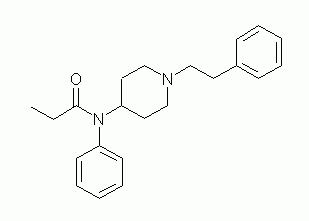Allan L, Hays H, Jensen N, et al. Randomized crossover trial of transdermal fentanyl and sustained release oral morphine for treating chronic non-cancer pain. BMJ 2001; 322:1154.
* BACKGROUND Recent public and legislative focus on pain management practices has led to scrutiny of guidelines for the role of opioids in pain therapy. A survey by the World Health Organization in 1998 revealed that 22% of patients seeing primary care physicians reported persistent pain. Better, more acceptable methods of pain control are needed. This study compared 2 methods of administering potent opioids to patients to determine which method produced better results
* POPULATION STUDIED A panel of 256 adult patients (age range = 26-82 years) was drawn from specialist pain clinics in Europe, Canada, and South Africa. Many of these patients (70%) had previous therapy with opioids for chronic non-cancer pain. Patients (N=24) were excluded who had previous exposure to morphine and had rated it "bad" or "very bad." Sixty patients withdrew, leaving 196 patients to complete the study. Duration of pain ranged from less than 1 year to 50 years, with a mean duration of 9 years.
* STUDY DESIGN AND VALIDITY The researchers of this randomized multicenter open label crossover trial enrolled patients with nociceptive and/or neuropathic pain. As the method of administration of the 2 drugs is different, patients were aware of the change in therapy. Patients received doses of opioid equivalent to their pre-study requirements. The study compared fentanyl patch (25, 50, 75, or 100 [micro]g/hr) and sustained-release oral morphine (10-, 30-, 60-, 100-, or 200-mg tablets). One group received 4 weeks of fentanyl followed by 4 weeks of morphine; the other received the drugs in reverse sequence. Medication dosage was fixed and not titrated to achieve pain control. This is perhaps the most important study limitation, because empiric dosage conversions are based on opioid equivalents determined in populations and often do not predict individual response.
The patients were assessed by evaluating pain control and quality of life at the completion of each period of therapy. At either the time of study completion or withdrawal, subjects stated whether they "preferred" or "very much preferred" one of the therapies. They elaborated on this preference by evaluating pain relief, adverse events, and convenience.
The patients invited to participate were chronically opioid-requiring and may have encountered study medications before the study; however, only preexisting experiences with morphine (194 participants) were mentioned. Although the study duration was likely long enough to assess the desired outcomes, the lack of blinding in pain studies is a limitations.
* OUTCOMES MEASURED Overall, patient preference was assessed, as well as feelings regarding convenience, adverse events, and pain relief. Pain control was evaluated through intensity of pain (scale of 0-100) and need for a rescue drug. Quality of life was evaluated using the Medical Outcomes Study 36-item short form quality-of-life instrument. Safety-related outcomes included the rate of nausea, constipation (using a bowel function questionnaire), and hypoventilation.
* RESULTS A preference for one product over another could not be assessed in 39 patients (15%). The 212 remaining patients (65%) either "preferred" or "very much preferred" transdermal fentanyl, compared with 28% preferring sustained-release oral morphine (P [is less than] .001.) Seven percent expressed no preference. Patients in the fentanyl group had lower pain intensity with a mean rating of 57.8 mm (range=33.1-82.5 mm), compared with a mean rating of 62.9 mm (range = 41.2-84.6 mm; P [is less than] .001). Pain control was rated "good" or "very good" by 35% of the patients while receiving fentanyl, but only by 23% of the patients while taking morphine (P=.002.) They also reported higher quality-of-life scores during fentanyl therapy than during sustained-release oral morphine use, with scores in the categories of bodily pain, vitality, social functioning, and mental health being significantly different. The incidence and proportion of adverse events was similar; fentanyl, however, produced higher rotes of nausea (26% vs 18%) but less constipation (16% vs 22%).
RECOMMENDATIONS FOR CLINICAL PRACTICE
Patients with chronic pain not due to cancer who were treated with both oral morphine and transdermal fentanyl were more likely to report less pain, greater satisfaction with treatment, and a better quality of like while treated with the transdermal product. However, nausea was more common with the patches, and the cost of the patches is approximately twice that of fentanyl patches. Patients requiring continuous opioid therapy who experience difficulty taking oral morphine should receive a trial of transdermal fentanyl.
COPYRIGHT 2001 Appleton & Lange
COPYRIGHT 2001 Gale Group



